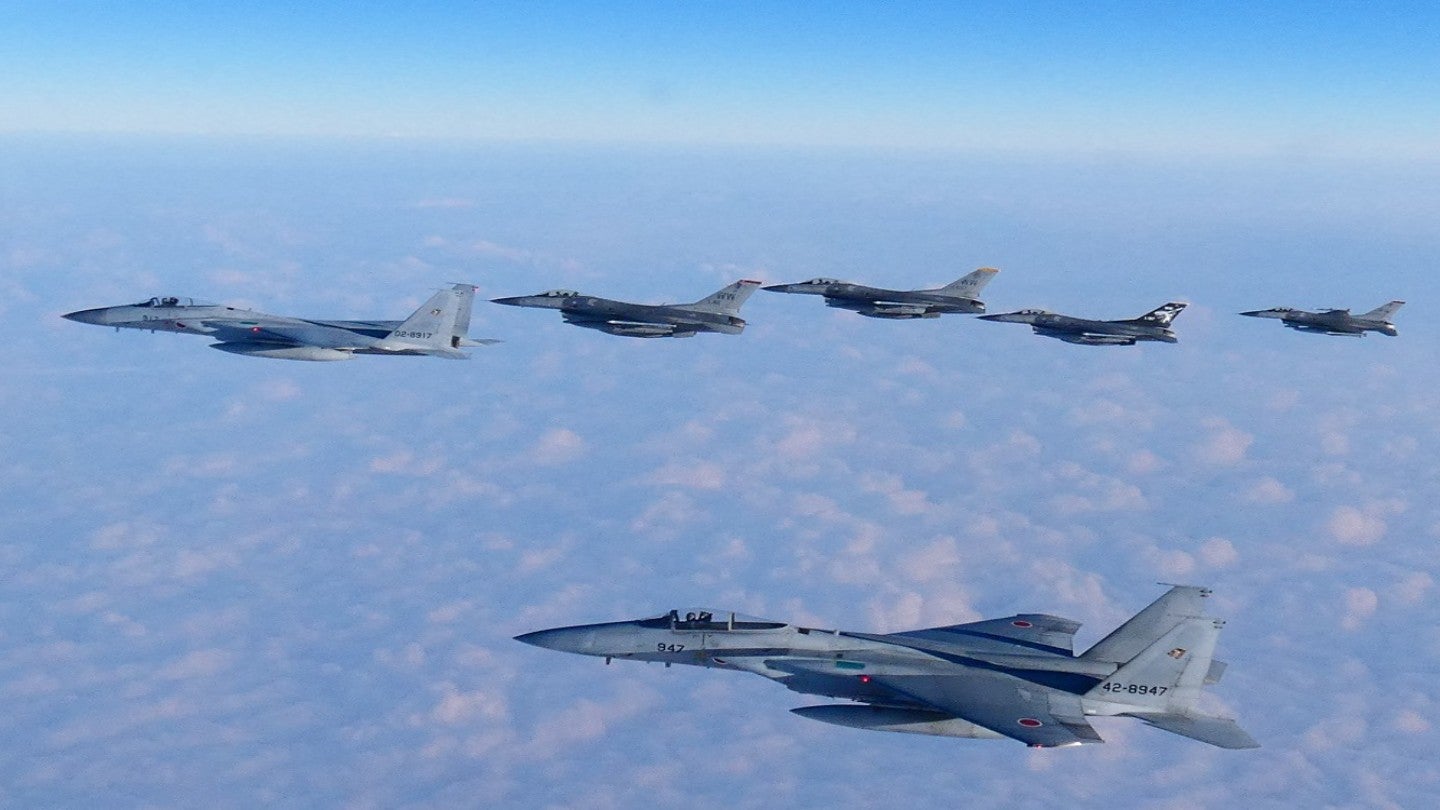
The US has carried out separate air exercises with both the Japanese and South Korean air forces to build quick response capability to any regional threat.
According to a US Forces Japan’s media statement, the bilateral exercise between Japan and US was conducted on 19 February to demonstrate the combined rapid capabilities of both nations in countering a wide range of regional adversaries.
Held above the Sea of Japan, the drills involved the deployment of US Indo-Pacific Command’s (INDOPACOM) F-16 fighter jets and B-1 bomber aircraft, along with the Japan Air Self-Defense Force (JASDF) B-15 fighter aircraft.
A statement from the Japanese Joint Staff said: “This bilateral exercise reaffirms the strong will between Japan and the US to respond to any situation, the readiness of JSDF and US Armed Forces, and further strengthens the deterrence and response capabilities of the Japan-US alliance.”
According to a US Forces Korea (USFK) statement, the combined air training event between the US and Korean forces involved the participation of the Republic of Korea (ROK) Air Force’s F-35A, F-15K and F-16 fighters, along with the USAF’s B-1B bombers.
USFK said: “The training offered the alliance an opportunity to rehearse short-notice recall missions, demonstrating the US-ROK combined defence capability, and the ironclad commitment to providing extended deterrence in the defence of the Korean Peninsula.”
How well do you really know your competitors?
Access the most comprehensive Company Profiles on the market, powered by GlobalData. Save hours of research. Gain competitive edge.

Thank you!
Your download email will arrive shortly
Not ready to buy yet? Download a free sample
We are confident about the unique quality of our Company Profiles. However, we want you to make the most beneficial decision for your business, so we offer a free sample that you can download by submitting the below form
By GlobalDataOn 18 February, the Democratic People’s Republic of Korea (DPRK, North Korea) test-fired a long-range ballistic missile.
In his remarks to the press, US State Secretary Antony Blinken said the missile ‘apparently fell in the exclusive economic zone of Japan’.
After being launched, Japanese Defence Minister Yasukazu Hamada said that the missile appeared to have a range exceeding 14,000km, which is enough to reach the US.
This was the first missile launch performed by DPRK since 1 January. Blinken called the launch ‘a provocative act by North Korea in violation of multiple UN Security Council resolutions’.
He said: “We have been very clear that our commitment to the security of our close allies and partners – South Korea and Japan – is ironclad. And beyond making that clear, we have been working very closely together in full coordination to take appropriate steps to strengthen even more our deterrence and defence capacity.”







